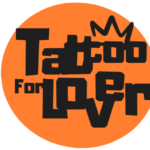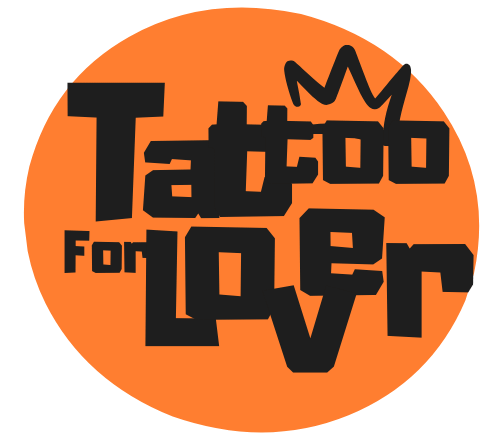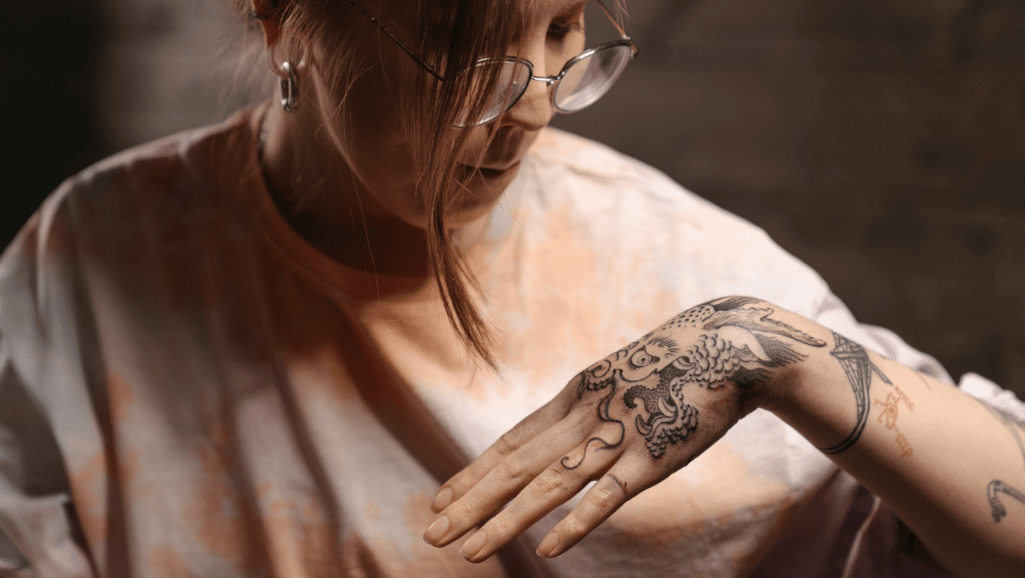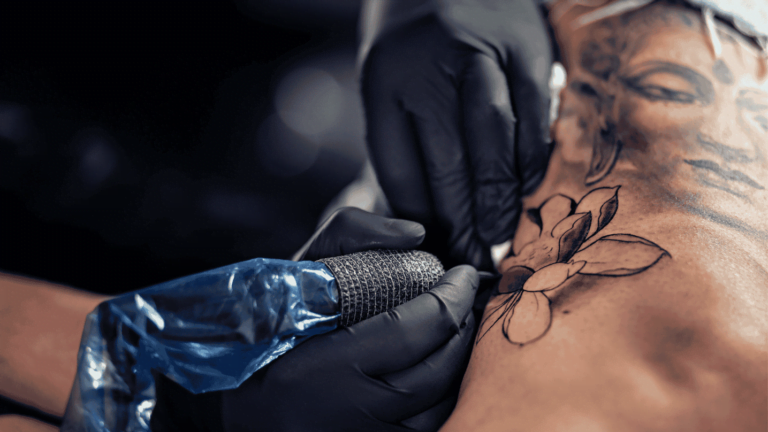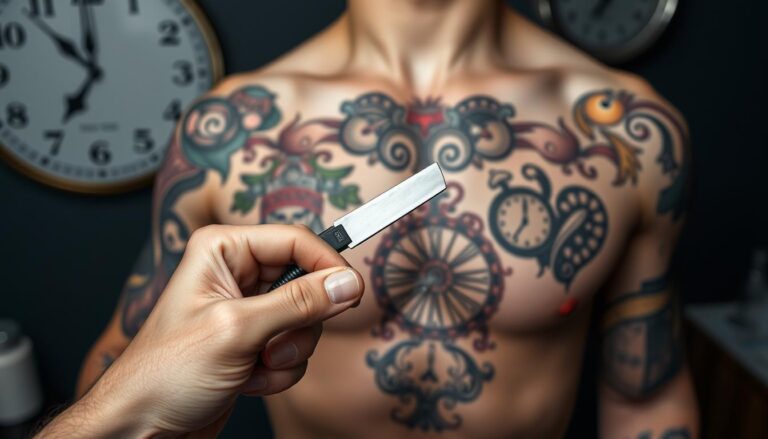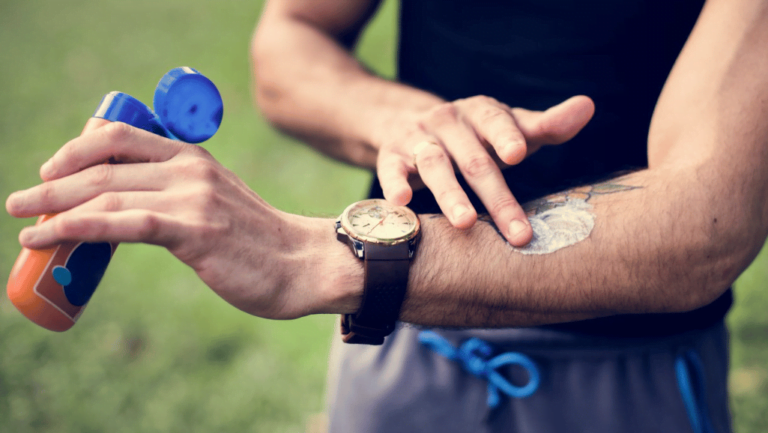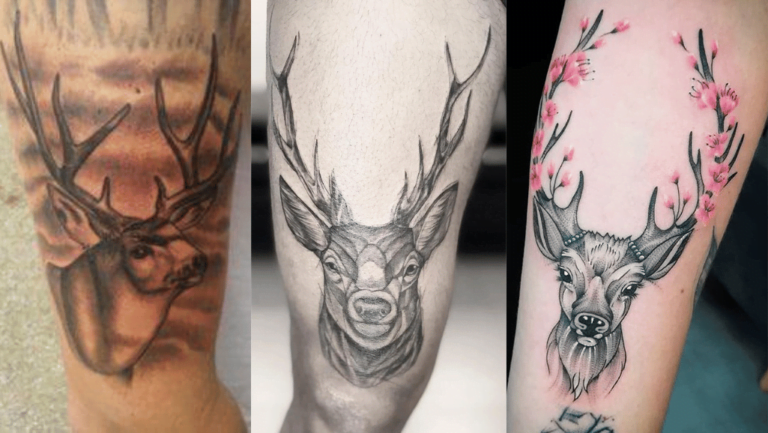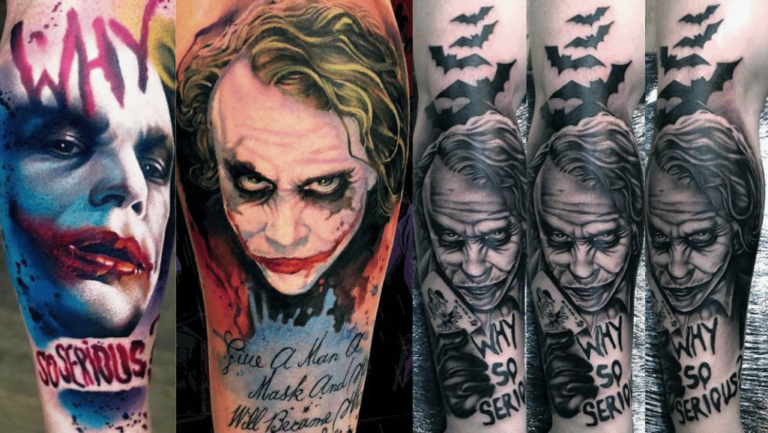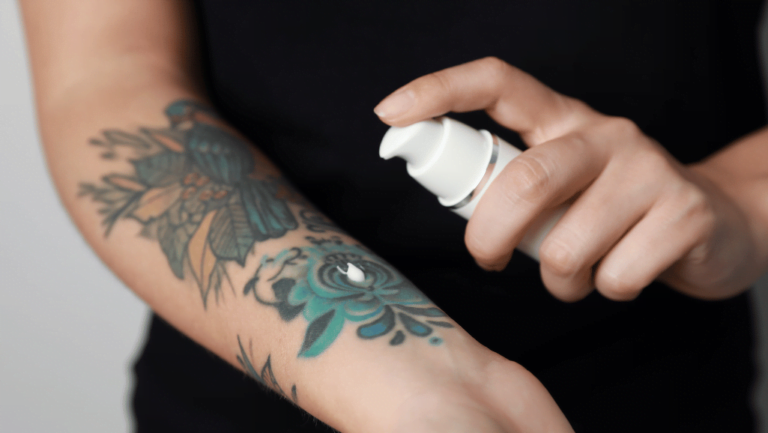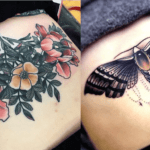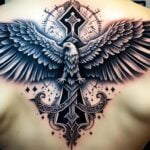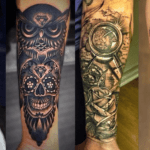Introduction
If you’ve recently gotten a new tattoo, you may be wondering why it appears raised. Why is my tattoo raised? This is a common question that tattoo enthusiasts often ask during the healing process. Understanding the causes of a raised tattoo can help alleviate any concerns and ensure proper aftercare. In this article, we will explore the various factors that can contribute to a raised tattoo, from the natural healing process to potential skin reactions. Let’s delve into the details and find the answers you seek.
Key Takeaways:
- A raised tattoo is normal during the healing process, and it can be attributed to the formation of scabs and crusts as the skin repairs itself.
- Other causes of a raised tattoo include individual body chemistry, weather conditions, allergic reactions, and undetected skin conditions.
- If the tattoo appears infected, with symptoms like swelling, redness, and pain, it is essential to seek medical attention for appropriate treatment.
- Allergic reactions to tattoo ink can cause the skin surrounding the tattoo to become raised, and it is important to consult a medical professional if an allergic reaction is suspected.
- Undetected skin conditions can also contribute to a raised tattoo, so it is advisable to consult with a dermatologist before getting a tattoo.
The Formation of Scabs and Crusts
During the tattoo healing process, the skin undergoes a series of changes as it repairs itself. One common occurrence during this process is the formation of scabs and crusts on the tattooed area. These scabs and crusts can make the tattoo appear raised, which might be a cause for concern for many individuals. However, this is a normal part of the healing process and should not be alarmed.
When you get a tattoo, the tattoo artist uses a needle to puncture the skin, creating an open wound. The body’s natural defense mechanism kicks in, and an immune response is triggered to heal the area. This immune response results in the formation of scabs and crusts to protect the healing skin and prevent any further damage or infection.
Scabs are formed when dried blood clots together and forms a protective layer over the tattoo. Crusts, on the other hand, are a combination of blood plasma, white blood cells, and other fluids that also aid in the healing process. These scabs and crusts can cause the tattoo to feel raised when touched or even visually look raised.
It is essential to resist the urge to pick or scratch at the scabs and crusts on your tattoo. Picking at the scabs can disrupt the healing process and increase the risk of infection. It can also cause the tattoo to take longer to heal, resulting in a less vibrant final result.
Tattoo Aftercare to Minimize Scabs and Crusts
Proper aftercare is crucial to minimize the formation of scabs and crusts on your tattoo. Following these aftercare tips can help your tattoo heal smoothly and reduce the raised appearance:
- Follow the aftercare instructions provided by your tattoo artist, which typically involve washing the tattoo gently with mild soap and warm water and applying a thin layer of tattoo ointment or moisturizer.
- Avoid picking, scratching, or rubbing the tattooed area. Let the scabs and crusts form naturally and flake away on their own.
- Avoid exposing the tattoo to excessive moisture, such as swimming pools, hot tubs, or long showers, as it can soften the scabs and prolong the healing process.
- Avoid direct sun exposure and protect your tattoo from the sun by wearing loose clothing or applying sunscreen with a high SPF.
- Stay consistent with your aftercare routine and keep the tattoo clean and moisturized until it is fully healed.
By following these aftercare guidelines, you can help minimize the formation of scabs and crusts on your tattoo and ensure a smoother healing process overall.
Tattoo Infection
In some cases, a raised tattoo may indicate an infection. An infected tattoo can cause various symptoms, including swelling, redness, and pain in the tattooed area. It is important to be aware of the signs of tattoo infection and seek proper treatment promptly.
Signs of Tattoo Infection
When a tattoo becomes infected, it may exhibit the following signs:
- Swelling: The tattooed area may appear significantly swollen compared to normal healing.
- Redness: The skin around the tattoo may be noticeably redder than usual.
- Pain: The tattooed area may be sensitive or painful to the touch.
If you experience any of these symptoms or suspect an infection, it is crucial to seek medical attention promptly. An infection left untreated can lead to further complications and long-term damage.
Tattoo Infection Treatment
To properly treat an infected tattoo, medical professionals may prescribe antibiotics to address the underlying infection. Additionally, they may recommend specific aftercare instructions to follow while the tattoo heals. It is essential to follow their guidance closely to ensure a full recovery and minimize the risk of further complications.
In some cases, minor infections can be treated with topical antimicrobial ointments or cleansing solutions. However, it is crucial to consult with a healthcare professional for an accurate diagnosis and appropriate treatment plan.
Remember, a timely response to tattoo infection is crucial for a successful recovery and the preservation of your tattoo’s appearance.
| Treatment Steps for Infected Tattoos | Actions |
|---|---|
| 1 | Seek medical attention: Schedule an appointment with a healthcare professional to diagnose and treat the infection. |
| 2 | Follow their instructions: Adhere to the prescribed treatment plan, including medication, wound care, and aftercare. |
| 3 | Avoid touching or picking at the tattoo: Keep the tattoo clean, dry, and protected to prevent further infection. |
| 4 | Monitor for improvement: Pay attention to the healing progress of the tattoo and report any concerning changes or persistent symptoms to your healthcare provider. |
| 5 | Follow up appointments: Attend any recommended follow-up appointments to monitor the healing process and address any further concerns. |
Tattoo Allergic Reaction
Allergic reactions to tattoo ink can occur, resulting in a raised appearance of the skin surrounding the tattoo. These reactions are often caused by certain ingredients in the ink, such as red or yellow pigments. If you experience a tattoo allergic reaction, it is essential to seek medical attention to properly address the issue and prevent further complications.
Common symptoms of an allergic reaction to tattoo ink include:
- Swelling and redness around the tattooed area
- Irritation and itching
- Skin flare-ups, such as hives or rashes
If you suspect an allergic reaction, it is crucial to consult with a healthcare professional or dermatologist. They can diagnose the allergy and recommend appropriate treatments to alleviate symptoms and minimize discomfort.
In some cases, treating allergic reactions to tattoo ink may involve:
- Using topical corticosteroids or antihistamines to reduce inflammation
- Applying soothing creams or ointments to relieve itching
- Avoiding scratching or rubbing the affected area
- Opting for laser tattoo removal if the reaction persists or is severe
Prevention is key in avoiding tattoo allergic reactions. To minimize the risk, it is advisable to:
- Consult with a reputable and experienced tattoo artist who uses high-quality ink
- Discuss any known allergies or sensitivities with the tattoo artist beforehand
- Request a patch test to check for potential reactions before getting a full tattoo
- Ensure the tattoo artist wears non-latex gloves during the tattooing process
By taking these precautions and being mindful of your body’s reactions, you can reduce the likelihood of experiencing an allergic reaction to tattoo ink.
Related:
Understanding the different tattoo reactions can help you make informed decisions about your body art. Learn more about tattoo blowouts and how to prevent them in our next section.
(Undetected) Skin Conditions
While getting a tattoo can be an exciting experience, it is essential to consider the potential risks and complications, especially for individuals with existing skin conditions. Some skin conditions may remain undetected until after getting a tattoo, causing flare-ups and discomfort. To ensure a safe and successful tattooing process, consulting with a dermatologist prior to getting a tattoo is highly recommended.
A dermatologist can assess the current condition of your skin and provide valuable insights into potential risks associated with tattooing. They can identify any existing skin conditions that may be triggered or aggravated by the tattooing process, helping you make an informed decision about proceeding with the tattoo.
One specific concern when it comes to skin conditions and tattoos is the potential association with skin cancer. While tattoos do not directly cause skin cancer, they can make it more challenging to detect skin changes that may indicate the presence of skin cancer. If you have a history of skin cancer or are at a higher risk due to genetic or environmental factors, it is crucial to address these concerns with a dermatologist before getting a tattoo.
Another common skin condition that may interact with tattoos is eczema. Eczema is a chronic inflammatory skin condition that can be triggered by various factors, including allergens and irritants. The tattooing process and the pigments used in tattoos can potentially aggravate eczema symptoms, leading to flare-ups and discomfort. Consulting with a dermatologist will help determine the best approach to manage eczema and minimize the potential impact of a tattoo on the skin.
By consulting with a dermatologist before getting a tattoo, you can ensure that your skin is in the best possible condition for the tattooing process. They can provide guidance on managing existing skin conditions, recommend appropriate aftercare measures, and address any concerns you may have about the potential impact of a tattoo on your skin.
Remember, your skin’s health and well-being should always be a top priority when considering getting a tattoo. Seek professional advice, and take proactive steps to ensure a safe and successful experience.
| Skin Condition | Potential Interaction with Tattoos |
|---|---|
| Existing skin conditions | Tattooing can trigger or aggravate existing skin conditions, causing flare-ups and discomfort. Consulting with a dermatologist is recommended to assess potential risks and complications. |
| Skin cancer | Tattoos can make it more challenging to detect skin changes that may indicate the presence of skin cancer. Individuals with a history of skin cancer should consult with a dermatologist before getting a tattoo. |
| Eczema | Eczema-prone skin can react to the tattooing process and pigments used in tattoos, leading to flare-ups. Dermatologist consultation can help manage eczema and minimize the impact of tattoos on the skin. |
Tattoo Blowout
In some cases, a tattoo artist may unintentionally go too deep into the skin during the tattooing process, resulting in a tattoo blowout. This occurs when the ink spreads beyond the intended design, leading to a blurred appearance and a raised tattoo. The process of healing a tattoo blowout can be challenging, but there are treatment options available to correct the issue and minimize scarring.
Tattoo blowouts can happen due to several factors, including the artist’s technique, the quality of the equipment used, or the natural variations in an individual’s skin. While it is not always possible to prevent a blowout from occurring, there are steps that can be taken to reduce the risk. Researching and selecting a reputable and experienced tattoo artist is crucial in minimizing the chances of a blowout.
If you notice that your tattoo has experienced a blowout, it’s essential to seek professional advice from a dermatologist or a tattoo artist experienced in tattoo correction. They will evaluate the extent of the blowout and suggest the best course of action based on your unique situation.
| Tattoo Blowout Treatment Options | Pros | Cons |
|---|---|---|
| Laser Correction | – Targets specific areas of the tattoo blowout – Minimizes the appearance of the blowout – Requires multiple sessions for optimal results | – Can be costly – May cause discomfort during the procedure – Some colors may require more sessions for complete correction |
| Complete Tattoo Removal | – Removes the entire tattoo, including the blowout – Allows for a fresh start with a new design – Can be effective for severe blowouts | – Requires multiple sessions for complete removal – May result in scarring – More expensive than other treatment options |
| Tattoo Cover-Up | – Conceals the blowout with a new design – Provides an opportunity for creativity – Can be effective for minor blowouts | – Requires careful planning and design – May not be suitable for all tattoo styles – The success of the cover-up depends on the skills of the tattoo artist |
Correcting Tattoo Blowout: What to Consider
When deciding which treatment option to pursue for tattoo blowout correction, there are several factors to consider:
- The extent of the blowout: The severity of the blowout will determine the appropriate treatment option.
- Tattoo size and location: The size and location of the blowout may influence the effectiveness of certain treatment methods.
- Personal preferences: Consider your desired outcome and how it aligns with each treatment option.
- Budget: Treatment costs can vary, so it’s important to factor in your budget when making a decision.
Consult with a professional to determine the best course of action for correcting a tattoo blowout. They will assess your specific situation and provide expert advice tailored to your needs.
Other Factors that Can Cause a Raised Tattoo
Aside from the normal bodily reaction to a tattoo and the potential for scabs and crusts during the healing process, there are other factors that can cause a tattoo to become raised. These factors include weather effects on tattoos, interactions with MRI machines, and certain bodily conditions.
Weather Effects on Tattoos
Weather conditions, such as high humidity or cold temperatures, can affect the appearance of a tattoo. In high humidity, the skin can retain moisture, leading to temporary swelling and a raised tattoo. Similarly, cold weather can cause the blood vessels to constrict, resulting in a similar effect. It’s important to keep the tattoo moisturized and protected from extreme weather conditions to minimize any raised appearance.
Tattoos and MRIs
During an MRI (Magnetic Resonance Imaging) scan, the magnetic forces can cause a tattoo to raise temporarily. The interaction between the tattoo’s pigments and the magnetic field can create a sensation of skin movement. This is a normal reaction and should not cause any significant concern. However, it’s essential to inform the MRI technician about the presence of tattoos to ensure accurate medical imaging.
Factors Causing Tattoo to Raise
There are other factors that can contribute to a raised tattoo, such as existing skin conditions. Individuals with conditions like eczema or psoriasis may experience flare-ups in the tattooed area, leading to temporary swelling and raised texture. In such cases, consulting with a dermatologist prior to getting a tattoo can help evaluate any potential risks or complications.
Overall, while a raised tattoo can be a normal response during the healing process, factors like weather effects, interactions with MRI machines, and existing skin conditions can also contribute to its raised appearance. It’s important to monitor any changes and seek medical attention if there are persistent issues or signs of infection.
Conclusion
After getting a tattoo, it is not uncommon for it to appear raised during the healing process. This is a normal bodily reaction to the tattooing process and the skin’s repair mechanism. However, it is important to be vigilant for any signs of infection or allergic reaction. If you notice symptoms such as swelling, redness, or persistent discomfort, it is crucial to seek advice from a medical professional or your tattoo artist to ensure appropriate treatment.
In most cases, a raised tattoo will resolve on its own with time and proper aftercare. It is essential to follow the recommended tattoo aftercare guidelines provided by your tattoo artist and to avoid touching or picking at the scabs and crusts that may form during the healing process. Additionally, keeping the tattoo clean and moisturized can help promote proper healing.
Understanding the factors that can contribute to a raised tattoo, such as weather conditions, individual body chemistry, allergies, and undetected skin conditions, can also help in addressing any potential concerns. Consulting with a dermatologist prior to getting a tattoo can provide valuable insights into the condition of your skin and minimize the risk of complications.
In conclusion, while a raised tattoo may initially cause some concern, it is usually a temporary and normal part of the healing process. By being proactive in monitoring for any abnormal symptoms and following proper aftercare measures, you can ensure a successful healing process and enjoy your tattoo for years to come.
FAQ
Why is my tattoo raised?
What causes scabs and crusts on a tattoo?
Can a raised tattoo indicate an infection?
Can allergic reactions cause a raised tattoo?
Can undetected skin conditions cause a raised tattoo?
What is a tattoo blowout?
What factors can cause a temporary raised tattoo?
How can I address a raised tattoo?
Forhad
Forhad's writing is not just about the artistry of tattoos or the latest trends in the industry; it's an exploration of the deep-rooted connections people have with their tattoos, reflecting personal narratives, cultural histories, and moments of transformation. Through a mix of in-depth features, personal narratives, and insightful analyses, he sheds light on the multifaceted nature of tattooing, revealing the emotional and cultural layers that lie beneath the surface.
